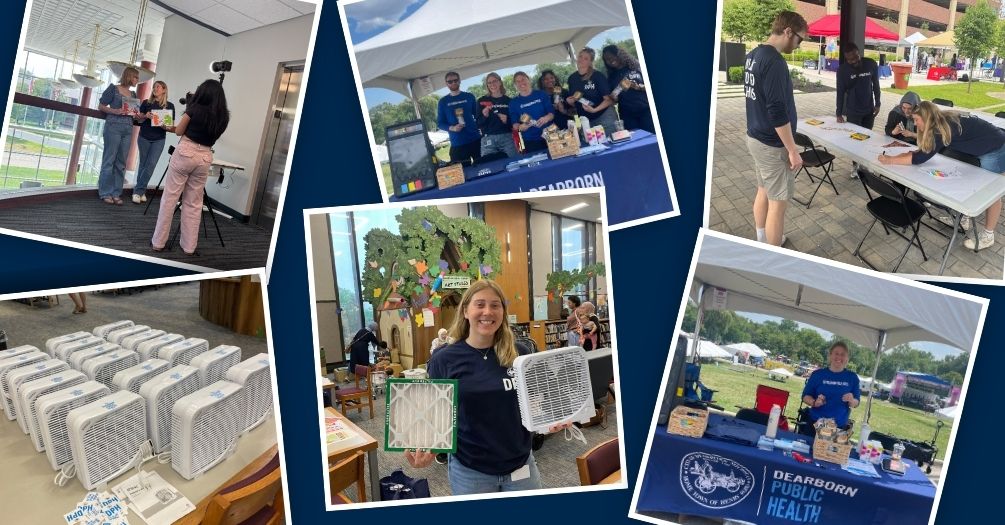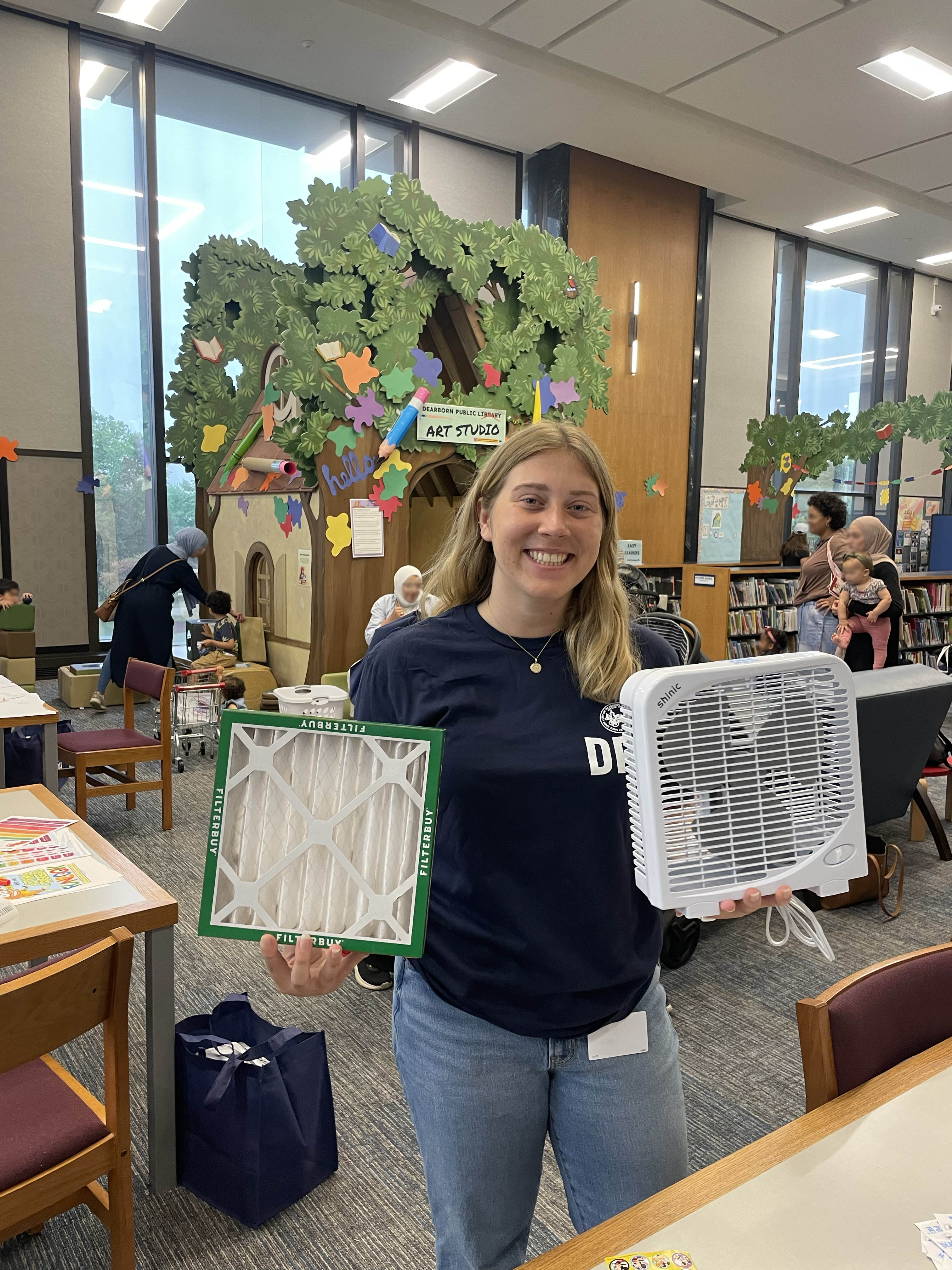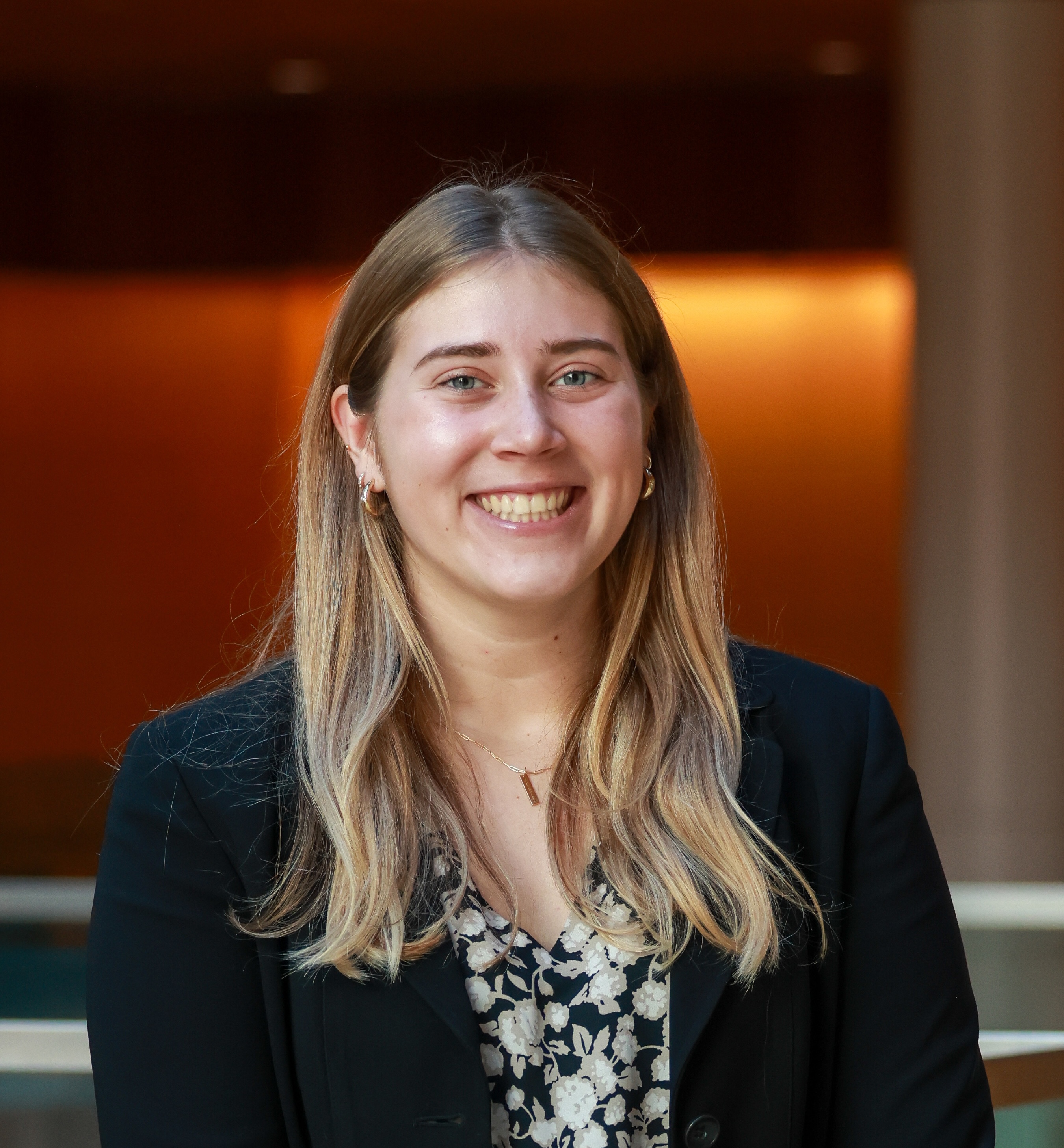From theory to practice: Environmental health student’s summer at Dearborn Public Health

By Julia Ginter-Berriman
Master of Public Health Student, Environmental Health Sciences
I have always felt a desire to create positive change in my community, and this is partly what drives my passion for public health. As a recent alum of the University of Michigan School of Public Health’s undergraduate program and now a Master of Public Health student studying Environmental Health Sciences, I hoped to apply the theoretical concepts from my coursework to a real-world setting. This past summer, I had the opportunity to do just that.
Working at the Dearborn Department of Public Health as a Public Health Fellow allowed me to gain hands-on experience in public health by working for local government, bridging the gap between classroom learning and community impact.
Health-in-all-policies in action

The Dearborn Department of Public Health (DPH) operates using a ‘health-in-all-policies’ approach, meaning they collaborate with all departments within the city’s government—emergency preparedness, economic development, libraries, parks and recreation, and more—recognizing that all departments and policies can directly or indirectly affect the health of the city’s residents.
DPH’s fellowship program hosted 10 fellows this summer, all students in various areas of study: from law, to health informatics, social work, and of course, public health. Throughout the summer, we had opportunities to meet with directors of the various departments across the city, learning about their work and considering how we could work together across departments. We worked directly under Sara Elhasan, the Public Health Advisor, as well as Ali Abazeed, the Director of DPH—both Michigan Public Health alumni and incredible mentors throughout the summer.
Given our diverse backgrounds and interests, fellows were granted the freedom to explore our interests in public health while also prioritizing the needs of the community through self-directed projects. Throughout the summer, I worked on projects relating to environmental health as well as gun violence prevention.
Bridging research and community: Gun violence prevention
I worked alongside Michigan Public Health’s research initiative Public Health IDEAS for Preventing Firearm Injuries to help bridge the gap between research and community interventions in gun violence prevention. Starting off the summer, I collaborated with the Dearborn Police Department to increase their supply of gun locks. These gun locks are openly available for the public to access. However, the department has had gun locks available for many years, so I wondered, “How could we do something different and meaningful?”
I worked with the IDEAS team to acquire more cable gun locks from the Michigan State Police for use of the Department of Public Health directly, in addition to the Police Department. Utilizing this supply, we were able to provide free cable gun locks at Dearborn’s Homecoming event and a Summer Health Fair. We promoted the free gun lock initiative through social media, where I was able to demonstrate how to use gun locks in a video.
Working at our table during the Homecoming event was a powerful experience for me. Individuals would ask what the gun locks were, and once we explained their use, people would excitedly take one, telling us how they personally needed a gun lock, or how they would give it to a family member who they knew owned guns. Hearing directly from people that were equally as excited about safety and injury prevention as we are was very striking, and it helped me truly understand the valuable impact of our efforts.
Environmental health in the community

Another highlight of the summer was planning a story time event at the Henry Ford Centennial Library along with a fellow intern. Together, we read a book written by the EPA to our youth participants and planned several activities for kids to participate in, all related to air quality and asthma. This is especially important because areas in Wayne County such as Dearborn and Detroit have high levels of air pollution, exacerbated by climate change, and disproportionately high rates of asthma. One of the activity stations provided families the opportunity to make a box-fan air filter, which is effective in improving indoor air quality, for free and take it home.
This event was another high point of my internship, where I was able to interact with the community while also providing a resource to help improve air quality in homes. This initiative felt especially important during a summer where wildfire smoke made for a lot of exceptionally poor air quality days.
Looking forward
As I continue to work at DPH this fall while taking classes and applying to medical school, I am able to take my new knowledge to supplement my lifelong learning. I have learned so much about working in public health, along with the interdisciplinary nature of health-in-all-policies. I am so grateful for the mentorship provided and connections with the other fellows, along with my practical experience in fields that I had not had opportunities to explore before.
My experiences this summer will continue to shape how I view public health and the world long into my future career. The intersection of community engagement, policy implementation, and direct service has shown me the multifaceted nature of public health work and reinforced my commitment to creating positive change in the communities I serve.
About the author
 Julia Ginter-Berriman is a second-year MPH student, studying Environmental Health
Sciences at the University of Michigan School of Public Health. She is passionate
about health equity, health promotion, and environmental health. She plans to continue
her education by pursuing medical school after graduation.
Julia Ginter-Berriman is a second-year MPH student, studying Environmental Health
Sciences at the University of Michigan School of Public Health. She is passionate
about health equity, health promotion, and environmental health. She plans to continue
her education by pursuing medical school after graduation.
- Learn more about Environmental Health Sciences at Michigan Public Health.
- Major in Public Health.
- For a healthier future in a changing world, look to Michigan Public Health
